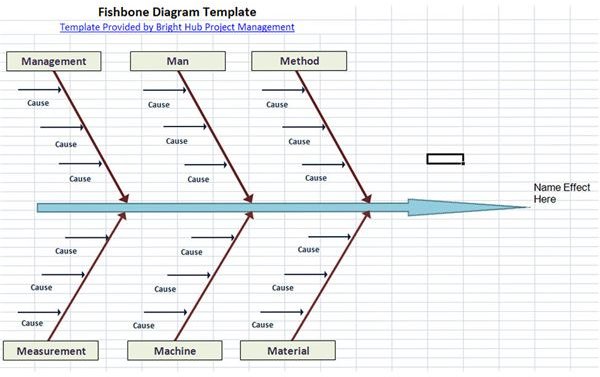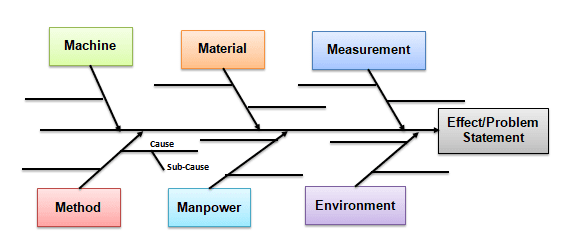
The group needs to then ask why the customer received the wrong product. For instance, it is not enough to say that a product was returned because the customer received the wrong product. The next step is to drill down for each of the potential causes to the root causes. In either case, the initial responses are drawn onto the appropriate main bone. In some cases the facilitator may prefer to have participants talk through one category or process phase at a time, to make it easier to properly track all the suggestions. It usually works best if people can toss out ideas in any category as soon as they think of them, which requires that the scribe quickly determine which main bone it fits on so it can be added in the appropriate place. Participants will begin brainstorming reasons why the problem described by the phrase in the fish head is occurring, prompted by the facilitator asking, “What are some possible reasons why X might be occurring?” For each potential cause, a bone is added to the appropriate main bone. Now comes the real work of creating a fishbone. If you prefer, you can instead label each of the main bones according to any basic categories which are relevant for your process and problem, such as Technology, Communication, Policies and Defects. For instance, you might have bones for the Marketing, Ordering, Fulfillment, Delivery and Product Performance stages of the process. Break your process down into separate stages and use those stages to label the main bones. Next draw several lines coming off of the main bone, at an angle like fish bones.

For instance, the phrase might be “37% of products are returned” or “customer does not complete online order process” for an online product sales company. Inside or next to the head of the fish, write a brief phrase that describes the problem for which causes are being suggested. Start the exercise by drawing the head of the fish and the main bone. For this exercise we will focus on using the fishbone from the beginning both for listing potential causes and for organizing them. Others like to fill in the fishbone diagram as they are generating ideas. Some teams like to first use the “ 5 Whys” technique to generate potential causes, and then organize them using the fishbone. As in all brainstorming exercises, participants should be encouraged to voice any ideas they have regarding possible causes of the problem, and others should withhold judgment until the next step in the process when potential root causes are evaluated and validated.

Creating A Fishbone Diagramīring together the appropriate people and set expectations regarding creation of the cause-and-effect diagram. Both groups provide valuable insights regarding the potential root causes of a problem and the questions that should be asked to dig down to root causes. Typically the participants in the exercise of creating a fishbone include both Six Sigma project team members and individuals who perform the process that is the subject of the project. In Six Sigma, analysis of root causes consists of two main components: brainstorming potential root causes and then validating with data which are in fact actual root causes. These tools are commonly used during the Analyze phase of a Six Sigma DMAIC project, as the goal of this step is to identify root causes for the process problem that is the focus of the improvement effort. Because it is used to analyze potential causes for an effect, it is also known as a cause-and-effect diagram. An Ishikawa diagram is referred to as a fishbone diagram due to its resemblance to a fish skeleton, with bones emanating from a central bone.


 0 kommentar(er)
0 kommentar(er)
